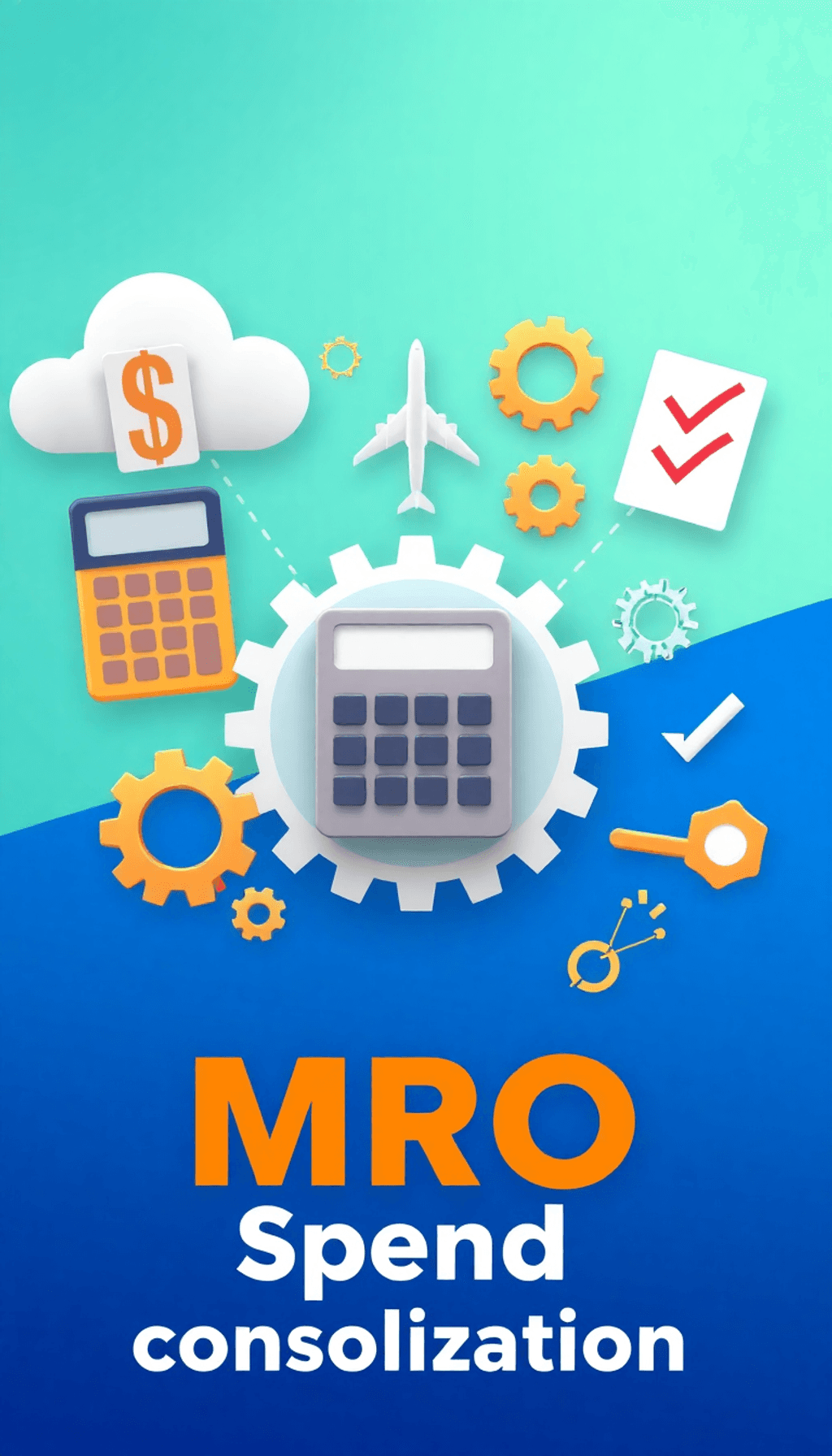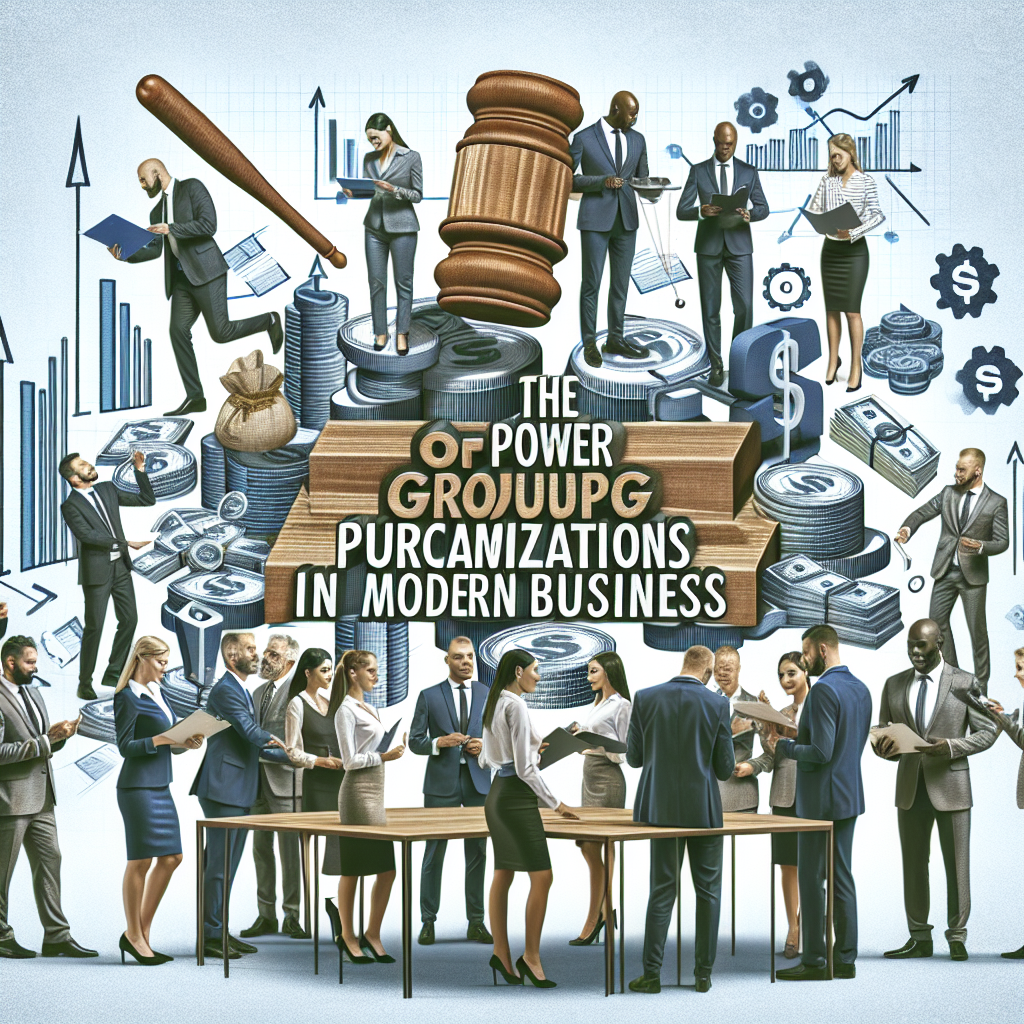Introduction
MRO spend consolidation refers to the strategic approach of optimizing Maintenance, Repair, and Operations (MRO) purchasing by reducing the number of suppliers. This procurement strategy is crucial in today’s business environments where cost reduction is a primary goal. Organizations face increasing pressure to streamline operations while maintaining quality and efficiency.
Key benefits of MRO spend consolidation include:
- Enhanced Buying Power: Fewer suppliers can lead to better pricing and terms.
- Operational Efficiency: Reduced time spent managing multiple vendor relationships allows teams to focus on core activities.
- Streamlined Procurement Processes: Consolidation often results in simplified purchasing procedures.
However, challenges exist in this approach:
- Supplier Selection: Finding suppliers that can meet diverse MRO needs while maintaining quality standards is essential.
- Initial Implementation Costs: Transitioning to a consolidated system may involve upfront investments.
Understanding these dynamics enables organizations to navigate the complexities of MRO spend consolidation effectively, paving the way for significant savings and improved operational performance. For instance, leveraging federal grant funding can help nonprofits optimize their MRO spending even with limited resources.
Moreover, it’s crucial to consider the essential PPE for airborne precautions in healthcare when consolidating MRO purchases in such sectors. Lastly, mythbusting common misconceptions about purchasing can provide valuable insights into making informed procurement decisions.
Understanding MRO Spend
MRO spending, which stands for Maintenance, Repair, and Operations, encompasses a wide range of essential items that organizations need to maintain their facilities and operations. The components of MRO spending include:
- Industrial Supplies: Everyday items like tools, safety gear, and cleaning products.
- Spare Parts: Components necessary for repairing machinery or equipment.
- Maintenance Equipment: Items such as lubricants, adhesives, and filters.
The significance of MRO in organizational budgets cannot be understated. It often represents a substantial portion of indirect spending. Effective management of MRO expenditures can lead to considerable cost savings. Organizations that prioritize MRO spend analysis can identify inefficiencies and streamline their procurement processes.
By consolidating suppliers, companies can leverage better pricing and terms due to enhanced buying power. This strategy not only reduces costs but also simplifies inventory management. A thorough understanding of MRO spending helps organizations allocate resources more effectively while ensuring operational continuity.
Furthermore, investing in industrial supplies that boost employee morale can lead to improved productivity and reduced downtime in various business environments. Additionally, embracing diversity, equity, and inclusion within the organization can further enhance operational efficiency.
Lastly, staying updated with the latest trends such as [supplier innovation](https://hubzonedepot.com/uncategorized/breaking-boundaries-the-top-trends-in-supplier-innovation-you-need-to-know) can provide organizations with a competitive edge in managing their MRO spend effectively. For personalized assistance in optimizing your MRO spending strategy, feel free to contact us.
Benefits of MRO Spend Consolidation
MRO spend consolidation offers numerous advantages that can significantly impact an organization’s bottom line. Here are some key benefits:
1. Enhanced Buying Power
By reducing the number of suppliers, you leverage higher purchasing volumes with consolidated vendors. This enhances your buying power, leading to [cost reduction opportunities](https://hubzonedepot.com/uncategorized/the-power-of-leveraging-drastic-cost-reduction-through-collective-spend). With fewer suppliers, organizations can negotiate better rates and terms, resulting in lower overall spending on MRO items.
2. Improved Pricing and Terms
Consolidated suppliers often provide better pricing structures due to the increased volume of business they receive. You may also access exclusive discounts and tiered pricing through unlocking exclusive membership benefits, which can further enhance savings. Suppliers are more inclined to offer favorable terms—such as extended payment periods or bulk purchase discounts—when they recognize that your organization is committing to a larger share of their business.
3. Time Efficiency with Supplier Management
Managing multiple suppliers involves extensive administrative tasks that consume valuable time and resources. By consolidating MRO spending, you reduce the complexity associated with supplier management. Fewer supplier relationships lead to less time spent on procurement activities such as order processing, invoicing, and vendor communications. This increase in efficiency allows your team to focus on core business objectives rather than tedious administrative duties.
4. Streamlined Procurement Processes
A consolidated approach simplifies procurement processes. With fewer suppliers, you can standardize purchasing procedures, making it easier for your team to navigate purchasing workflows. Streamlined processes lead to quicker decision-making and faster order fulfillment times. In addition, centralized inventory management systems become more effective when working with fewer suppliers, allowing for enhanced inventory tracking and reduced replenishment costs. To further enhance these streamlined processes, consider exploring the best procurement software and outsourcing companies available in the market.
The combination of these factors creates a compelling case for MRO spend consolidation within your organization. By focusing on fewer suppliers, you not only drive cost savings but also create a more efficient procurement environment that supports long-term operational effectiveness. Embracing this strategy enables you to allocate resources smarter while maintaining quality standards across all purchased goods and services.
This strategic alignment sets the stage for leveraging advanced technologies and analytics tools in future procurement efforts, leading to ongoing enhancements in cost management practices. However, it’s important to note that such a transition may come with its own set of challenges. In such cases, having a solid plan for [building resilience during tough times](https://hubzonedepot.com/uncategorized/procurement-in-crisis-building-resilience-for-tough-times) can be invaluable. Additionally, for those just starting out in this field, pursuing entry-level procurement jobs could provide the necessary experience and knowledge to navigate these complexities effectively.
Implementation Strategies for MRO Spend Consolidation
Effective MRO spend consolidation requires a strategic approach that leverages data analysis and centralized inventory systems. Engaging in deep data analysis is crucial for identifying cost-saving opportunities within your organization.
Importance of Deep Data Analysis
Data analysis for procurement insights involves examining historical spending patterns, supplier performance, and inventory turnover. Key aspects include:
- Identifying Spending Patterns: Understanding how much you spend on different categories can reveal areas ripe for consolidation. This is where tail spend management comes into play, helping organizations to identify and manage the smaller, non-critical portions of their spend.
- Evaluating Supplier Performance: Analyzing delivery times, quality, and pricing helps determine which suppliers offer the best value. This process ties closely with supplier relationship management, focusing on fostering better relationships with key suppliers.
- Predictive Analytics: Using historical data to forecast future needs can optimize inventory levels and reduce excess stock.
- Procurement Analytics: A deeper dive into procurement analytics can uncover insights that drive smarter purchasing decisions.
Implementing these data analysis techniques enables organizations to make informed decisions about which suppliers to consolidate.
Tools and Methods for Effective Data Analysis
Several tools can assist in performing effective data analysis in the context of MRO spend consolidation:
- Procurement Management Software: Platforms such as Coupa or Ariba provide comprehensive dashboards that display spending trends, supplier evaluations, and contract compliance.
- Data Visualization Tools: Applications like Tableau or Power BI transform complex datasets into easy-to-understand visual formats, highlighting critical insights.
- Excel Spreadsheets: For smaller organizations or those just starting with data analysis, Excel remains a powerful tool for tracking expenses and analyzing supplier performance through pivot tables and charts.
By utilizing these tools, organizations can gather actionable insights that drive MRO spend consolidation efforts.
Benefits of Centralized Inventory Systems
Centralized inventory data management streamlines operations by providing a single source of truth across all locations. This approach offers several advantages:
- Enhanced Visibility: Real-time access to inventory levels ensures you have the right products on hand when needed, reducing the risk of stockouts or overstock situations.
- Improved Tracking: Centralization simplifies tracking usage patterns and ordering cycles, enabling better forecasting and replenishment strategies.
- Cost Reduction: With centralized systems, organizations can negotiate better contracts based on aggregate purchasing volumes, leading to significant savings.
Implementing centralized inventory systems not only optimizes operational efficiency but also supports more informed decision-making regarding MRO spend consolidation.
By focusing on deep data analysis, employing effective tools such as procurement management software which is pivotal in strategic sourcing efforts, leveraging centralized inventory management, and understanding certain [procurement terms](https
Considerations When Consolidating MRO Suppliers
When consolidating MRO suppliers, careful evaluation is crucial. Focus on the following factors to ensure a successful transition:
Supplier Evaluation Criteria
- Upfront Costs: Assess the initial investment required when partnering with a new supplier. This includes not only pricing but also any potential hidden costs associated with switching suppliers.
- Performance Metrics: Evaluate suppliers based on their historical performance. Key metrics include:
- Delivery times
- Product quality
- Customer service responsiveness
- Return and warranty policies
Understanding these metrics helps in identifying suppliers that align with your organizational needs. For instance, maximizing supplier performance can significantly enhance your procurement process.
Balancing Cost Savings and Quality Standards
The goal of consolidation often centers around cost reduction. However, this should not come at the expense of quality. Consider the following challenges:
-
Quality Assurance: Lower costs can sometimes indicate compromised quality. Investigate how potential suppliers maintain standards. Look for certifications or industry benchmarks that assure product reliability.
-
Long-term Relationships: Establishing long-lasting partnerships with suppliers can lead to better pricing and terms over time. Weigh the benefits of a lower-cost supplier against the value of an established vendor with proven reliability.
Additional Factors to Consider
-
Supplier Capabilities: Ensure that the supplier has the capacity to meet your organization’s specific demands, including volume fluctuations and emergency requirements.
-
Flexibility: Examine how adaptable a supplier is in accommodating changing needs or unexpected issues. A flexible supplier can provide significant advantages, especially during times of crisis or rapid change.
-
Technology and Support: Analyze the technological capabilities of potential suppliers. Suppliers who offer advanced inventory management systems or data analytics can enhance efficiency and provide insights into your procurement process.
Assessing these elements thoroughly allows you to make informed decisions that support both cost-effectiveness and quality assurance in MRO spend consolidation. By prioritizing performance metrics alongside upfront costs, organizations can navigate challenges effectively while maintaining high standards throughout their supply chain operations.
Additionally, it’s essential to maximize cost savings without compromising on quality or supplier relationships. This requires transparent communication with suppliers, which plays a pivotal role in building trust and driving business growth.
Real-World Examples of Successful MRO Spend Consolidation Case Studies
One compelling example of successful MRO spend consolidation is Hubzone Depot LLC, a certified woman-owned office and industrial supplier based in Burlington, NJ. Their approach showcases effective strategies and noteworthy outcomes:
1. Target Audience
Hubzone Depot primarily targets public sector clients who use public funds, ensuring compliance with HUBZone requirements.
2. Cost Reduction
They have achieved average savings of 15-25% on MRO spending. This significant reduction comes from leveraging their membership in a Group Purchasing Organization (GPO), which allows them to buy in bulk.
3. Customer Engagement
The company places a strong emphasis on personalized customer support, which enhances client relationships and service satisfaction. Client testimonials highlight the high quality of service and competitive pricing they offer.
4. Implementation Process
Hubzone Depot provides a smooth implementation experience, with expert guidance that minimizes disruption to operations.
The key lessons learned from Hubzone Depot’s experience include:
- The importance of strategic partnerships with suppliers
- The value of centralized procurement processes
- The benefits of GPO membership for cost efficiencies
This real-world example demonstrates how organizations can successfully navigate MRO spend consolidation while achieving significant financial gains.
The Future Outlook on MRO Spend Consolidation Strategies in Procurement
The landscape of MRO spend consolidation continues to evolve, driven by emerging technologies and strategic partnerships. Organizations that adopt a proactive approach can reap significant rewards. Key aspects include:
1. Leveraging Technology
Advanced analytics and data-driven insights enable businesses to identify cost-saving opportunities effectively. Automation tools streamline procurement processes, reducing manual intervention and errors. This procurement optimization is essential for staying competitive.
2. Strategic Partnerships
Collaborating with suppliers fosters relationships that can lead to better pricing and favorable contract terms. A strong partnership enhances communication, ensuring alignment on goals and expectations. Understanding the difference between purchasing groups versus group purchasing organizations can further strengthen these partnerships.
3. Continuous Improvement
Implementing a culture of feedback and adaptation allows organizations to refine their strategies over time. Regular assessments help maintain quality while optimizing costs. As Frank Corris’s transformative journey shows, mastering procurement through continuous learning and strategic thinking is key to success in this field (Frank Corris’s journey).
4. Focus on Sustainability
As businesses prioritize sustainability, consolidating suppliers can align with eco-friendly practices. This commitment not only enhances brand reputation but also attracts environmentally conscious customers.
The summary of benefits associated with MRO spend consolidation is clear: enhanced efficiency, cost savings, and improved supplier relationships. By embracing these strategies, organizations position themselves for long-term success in an increasingly competitive environment.
For those managing a one-person procurement function, there are specific strategies to optimize cost efficiency and supplier management which can be highly beneficial.
Lastly, as we look toward 2025, understanding the salary trends for procurement engineers can provide valuable insights into future job market dynamics.
FAQs (Frequently Asked Questions)
What is MRO spend consolidation and why is it important?
MRO spend consolidation refers to the strategy of combining maintenance, repair, and operations spending across an organization to enhance procurement efficiency. Its importance lies in the ability to reduce costs, streamline procurement processes, and improve supplier management in today’s competitive business environments.
What components are included in MRO spending?
MRO spending encompasses various components such as industrial supplies, spare parts, tools, and services necessary for maintenance and operations. Understanding these components is crucial for effective budgeting and resource allocation within an organization.
How can MRO spend consolidation lead to cost savings?
Enhanced buying power through fewer suppliers can significantly lead to cost savings by enabling better pricing negotiations and terms. Additionally, consolidating suppliers reduces the time spent on managing multiple vendor relationships, allowing organizations to focus on strategic initiatives.
What strategies can be implemented for effective MRO spend consolidation?
Effective MRO spend consolidation strategies include conducting deep data analysis to identify cost-saving opportunities, utilizing centralized inventory management systems for improved tracking, and employing tools that facilitate effective procurement insights.
What considerations should be taken into account when consolidating MRO suppliers?
When consolidating MRO suppliers, it is essential to evaluate supplier capabilities based on upfront costs and performance metrics. Organizations must also balance the pursuit of cost savings with the need to maintain quality standards throughout the consolidation process.
Can you provide an example of successful MRO spend consolidation?
One successful case study is Hubzone Depot LLC, which effectively consolidated its MRO spending. Key takeaways from their experience include the importance of thorough supplier evaluation and leveraging technology to enhance procurement efficiency.





